Suffering with Achilles Pain is no fun!
Having a healthy and well-functioning Achilles tendon is very important for normal walking and avoiding Achilles Pain. The Achilles tendon joins the calf muscle at the back of your leg to your heel bone (calcaneus).
In our anatomy picture below the long white part is the Achilles tendon and the red area is commonly where it gets sore. Achilles Pain is often the result of straining and tearing of the Achilles Tendon fibres. This can lead to inflammation (Achilles Tendonitis) and / or degeneration (Achilles Tendonosis)
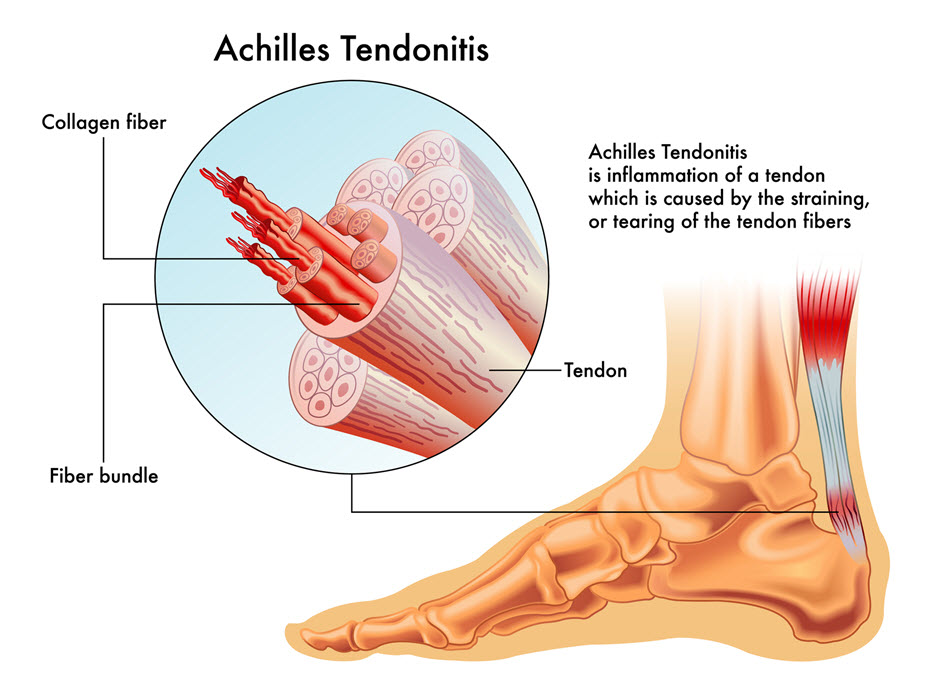
On x-ray view there will often be an associated heel spur. The heel spur is not the cause of pain it’s a sign that the Achilles tendon has been putting too much pressure on the back of the heel.
The body lays down extra bone to try to strengthen the area and protect the heel. It is this extra bone that causes a heel spur. When we see a heel spur on x-ray it can be a sign that this part of the body has been overworked for a long period of time.
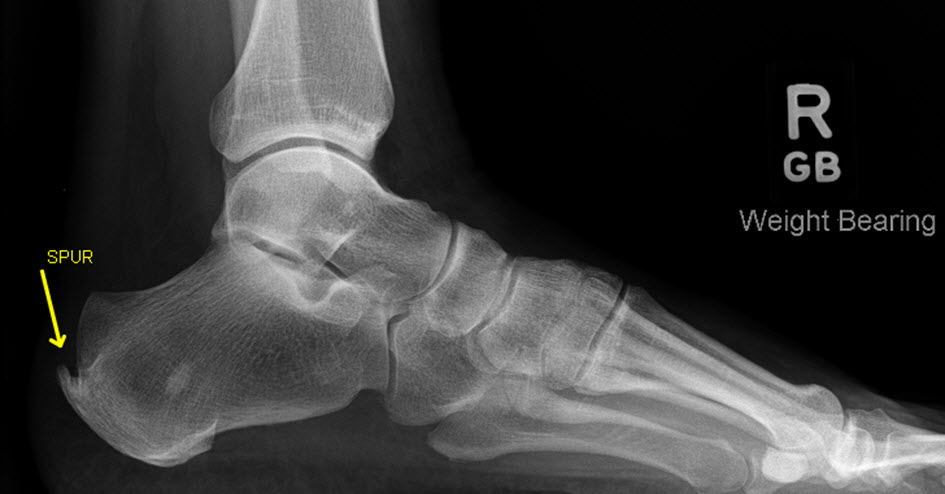
What can cause our Achilles to become sore, inflamed and unhealthy?
- Flat feet or pronated feet
- High arch and tight Achilles tendon
- Unsupportive or incorrect footwear
- Over-training– “too much too soon”
- Sudden change in training surface – e.g. grass to footpath
- Tight calf muscles
- Constantly wearing high heels
With all of these causes above there is often an underlying “biomechanical issue” as well.
If you imagine your feet like wheels on a car. If your wheel alignment is out or some of the bony structural parts of your feet are not quite in the right position then this can cause excess stress on the tissues in your feet and legs. This can cause your ligaments and tendons to work overtime and result in strain and and Achilles Pain.
Tips and Tricks to Ease Your Achilles Pain
Short Term:
Ice is nice, but rice is nicer
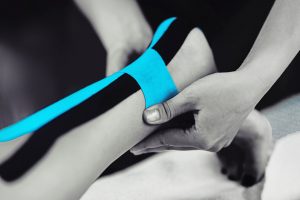
Rest – when you have an Achilles injury the first step is to stop activity or reduce activity to stop further damage. This helps to reduce the swelling and bleeding. Taping can also help to take load off the Achilles.
Ice –apply an ice pack to the Achilles its best to have a face washer directly on the skin and then the ice pack on top. If you don’t have an ice pack don’t worry a bag of frozen peas works just as well.
Ice helps to reduce inflammation and promote good healing. Apply ice for 20 minutes on then 20 minutes off then 20 minutes on again with a 2-hour break then repeat.
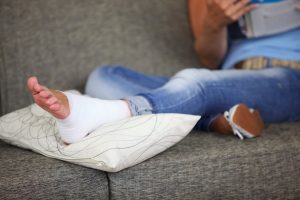 Compression –area using a bandage or compression stocking will help reduce swelling. A compression bandage can be used both during and after ice treatment.
Compression –area using a bandage or compression stocking will help reduce swelling. A compression bandage can be used both during and after ice treatment.
The compression should be firm but not so tight it causes pain or acts a tourniquet. Compression also helps to rest the area at takes some of the load off the Achilles.
Elevation – Elevating the foot helps reduce swelling. Above the heart is recommended so using a recliner chair or laying down with feet on pillows (don’t have the pillows directly on the sore spot). This also helps to rest the feet.
Long Term:
The trick for long term success and relief for Achilles Pain is identifying and stopping poor functional habits and supporting feet which may not be working optimally.
Unsupportive or incorrect footwear
Wearing shoes which are correct for your foot type can really help. Poor shoes can really aggravate Achilles Pain. I often find you’ll have a pair or two in your current shoe options that can work. Unfortunately there is no one type that works for everybody. Having your foot type assessed by your podiatrist or at a knowledgeable shoe store will help you choose the best shoes for your foot type.
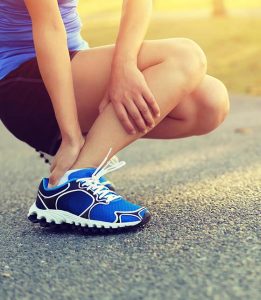
Over-training– “too much too soon”
Reviewing your exercise load and training surfaces is an important consideration. Modifying your training to a level where you are not further aggravating the Achilles Pain can be a good method to ensure you can still train without stopping altogether. We still want to apply some load to the Achilles Tendon as this aids in healing.
Stretch- tight calf muscles
Studies have shown that there is a correlation between people with tight and short calf muscles and Achilles Pain. Its makes sense, as short muscles will put more stress on your Achilles tendon and restrict ankle movement. Carefully stretching calf muscles increases ankle range of movement and reduces the day to day load on the Achilles Tendon. Click Here for some corrective exercise tips.
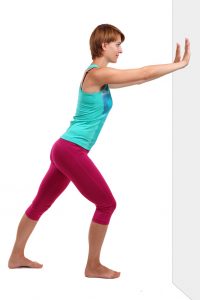
Reduce the height of your heels
The soft tissues in our body adjust to the way our feet and legs work. So if you are wearing high heels a lot, the calf muscles become very short as they adapt to these positions. This puts extra strain on the ligaments and tendons that join onto the heels.
Stretching the calf muscles and slowly reducing wearing of high heels allows your calf muscles to adapt over time. This is a great way to reduce the load, pain and stress on the Achilles tendon.
The 80/20 rule is an excellent rule to follow that helps ensure we have comfortable happy feet. The goal is to wear good supportive shoes matched to your foot type 80% of the time. Then your can wear those killer heels the other 20% of the time without killing your feet and Achilles.
Identify and correct underling biomechanical issues causing your Achilles Pain
Correcting your wheel alignment and addressing underlying biomechanical abnormalities (how your foot functions) is key to long term success and prevention. When everything is well aligned this helps to reduce the load on the Achilles Tendon and your body can naturally repair the inflamed and damaged tissue.
Seeing a health professional who can help you to assess what are the underlying causes of your Achilles Pain and treating these effectively will get you back on your feet fast.
More blog posts…

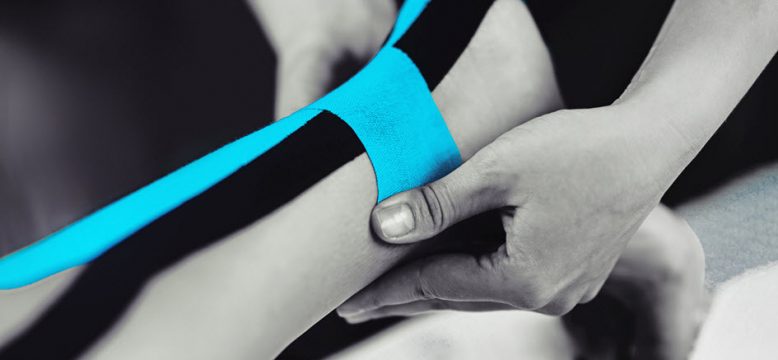




No comments yet.